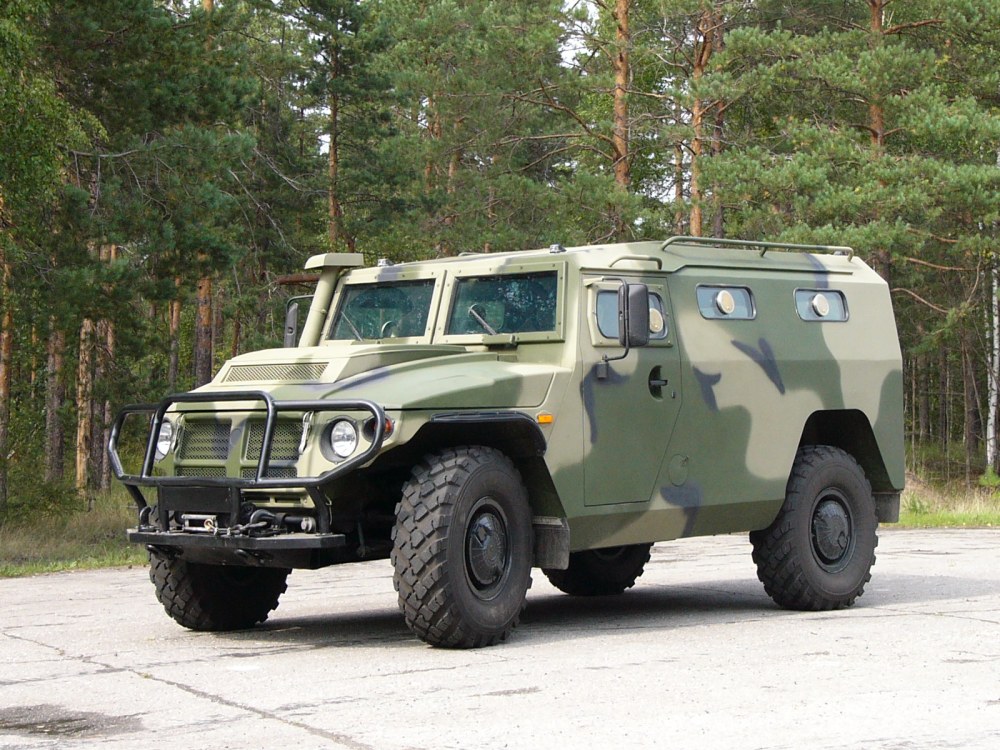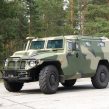
Russia Intensifies Intervention Options in Central Asia
Publication: Eurasia Daily Monitor Volume: 9 Issue: 130
By:

Moscow plans to re-equip the multi-role brigades in the Russian Ground Forces with wheeled military vehicles. The decision to displace the existing tracked platforms is meant to enhance operational mobility. The initiative emanated from Army-General Nikolai Makarov, the Chief of the General Staff, who was recently buoyed in his post after President Vladimir Putin issued an ukaz extending his service by an additional two years. Therefore, Makarov is likely to remain in his post until October 2014 (RIA Novosti, July 3).
However, the underlying reasons for prioritizing the introduction of large numbers of wheeled platforms in the Russian Army are linked to the ongoing struggle between the Defense Ministry and the domestic defense industry to achieve much improved results in procurement for the Armed Forces, as well as the General Staff requiring enhanced intervention options for operations in strategic locations such as Central Asia. Critics of this development in Russian military procurement policy note that without additional supporting efforts to design strengthened armor for fire protection, the improvement may yield limited results (Interfax, July 4).
The critical factor in changing the procurement needs of the Russian Ground Forces is the emerging working relationship between Makarov and Dmitry Rogozin, the Deputy Prime Minister who oversees the defense industries. Sources in the Defense Ministry confirmed that Rogozin championed the initiative on Makarov’s behalf during a recent session of the Russian Military-Industrial Commission. This step, however, marks a decisive change in the approach to hardware used by the Russian Army – from tracked to wheeled platforms (Izvestiya, July 6).
These changes will impact on air defense, electronic warfare assets and communications systems – all will be placed on wheels – and will extend to tank guns and artillery. Indeed, the driving force in favor of this option is the need to markedly improve the speed that wheeled vehicles offer on roads compared to slower moving tracked platforms. Izvestiya’s Defense Ministry source added: “Wheeled vehicles are more mobile than tracked vehicles. And in modern conditions, mobility is becoming a decisive factor.” Makarov advocated a varied approach to equipping the existing light, medium or multi-role, and the so-called heavy Ground Forces brigades; the latter will receive the Armata heavy tracked platform currently under development by Uralvagonzavod. The light brigades will be equipped with individual and anti-tank weapons mounted on Tigr, Rys and Bumerang platforms (Izvestiya, July 6).
Izvestiya’s source in the Russian truck manufacturer KamAZ explained that the company has proposed to develop a new Tayfun six-axle vehicle for the multi-role brigades, and noted that the “leading armies in the world” had switched to similar systems “years ago.” The KamAZ source added: “If military actions in the last ten years were analyzed, predominantly high-precision weapons and wheeled vehicles were used everywhere. The mission was as follows: deploy the forces quickly, shoot quickly, and just as quickly relocate before the enemy systems can open fire. For such missions it is specifically wheeled vehicles that are suited best of all, because in the time that tracked vehicles take to drive to their assigned location, wheeled vehicles would have already fired and driven off” (Izvestiya, July 6).
The timing of this latest effort to enhance the operational mobility of the Russian Ground Forces comes shortly after conducting military exercises in Tajikistan on a bilateral as well as multilateral level through the Shanghai Cooperation Organization (SCO). This suggests Moscow is attaching importance to Central Asia as a possible area of military operations. Introducing wheeled platforms in the Ground Forces will allow much faster movement and mobility of Russian troops during any future operations there (Interfax, June 14).
In late June 2012, the International Technology and Engineering Forum 2012 witnessed a breakthrough for Russian military hardware: Igor Sevastyanov, the Deputy General Director of Rosoboronexport, announced that Paris had offered a landmark deal to develop a new Franco-Russian armored personnel carrier. This asset is expected to enter the table of organization and equipment in the Russian Armed Forces within two years (Rossiyskaya Gazeta, July 4). The French developers of the jointly produced platform argue that it will achieve “incomparable endurance capability,” and guarantee the following technological points: ballistic protection offered by an aluminum alloy with add-on armor, protection against mines and improvised explosive devices (IEDs), and a “stealth” function (Rossiyskaya Gazeta, July 4).
Combat training equipment, such as the German simulator system being introduced in Mulino, will also contribute to raising standards in the Russian Armed Forces. It appears that Moscow intends to enhance the military capabilities of its conventional Armed Forces by finding partners within NATO member countries on a bilateral basis. However, these military-technical changes in Russian defense policy in the context of its military modernization plans will also compel a fundamental transformation in the manpower structure; as the technology and hardware becomes increasingly more high-technology based and sophisticated, it will demand professional rather than conscript personnel to understand, handle and use the new systems (Rossiyskaya Gazeta, July 4).
Although the proposed transition from tracked platforms to wheeled vehicles may not result in rapid improvements in the capabilities of the Russian Armed Forces, this must be understood in its local context. The underlying interest on the part of Makarov is to boost the speed and mobility of Russian forces during combat operations; the likely theaters of operations are unlikely to witness enemy forces operating on par with NATO standards. Makarov wants the Ground Forces brigades to possess the capability to act swiftly during any future crisis. The roots of this are linked at a political level to rising anxieties in Central Asia about regional security after the NATO drawdown from Afghanistan is complete in 2014. This uncertainty also allows Moscow to maximize its opportunities to sell arms to its allies in the region. Nevertheless, Russia also recognizes that for a whole range of reasons – from potential socio-political instability in Central Asia, such as the revolutions in Kyrgyzstan or a sudden eruption of conflict in the region, to transnational threats leading to a crisis escalating rapidly – Moscow requires deployment capabilities in the region that are currently lacking (Rossiyskaya Gazeta, July 4).
Russian procurement priorities in terms of hardware for the Ground Forces brigades are now taking on a distinctly realistic appearance, driven by a shift in General Staff thinking on the likely theater of future military operations: Central Asia. At a political level, this assessment, and the money spent on meeting the procurement needs to equip these brigades, may allow the Kremlin to reassert its once dominant security role in the region post 2014.




